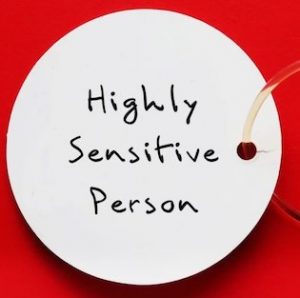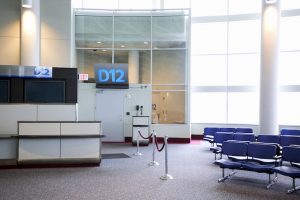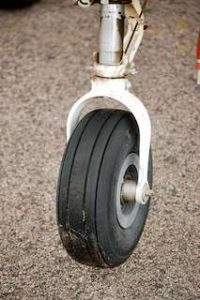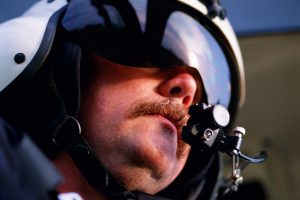Psychometric Test for Neuroticism in Aviation
 Psychometric test for neuroticism helps airlines assess emotional patterns in pilots. Pilots experience stress, pressure, and high-stakes environments. These tests explore how pilots manage emotions and mental strain. Neuroticism, when measured early, supports decisions in training and development. Therefore, airlines use this test to maintain safety, performance, and operational reliability across all flights.
Psychometric test for neuroticism helps airlines assess emotional patterns in pilots. Pilots experience stress, pressure, and high-stakes environments. These tests explore how pilots manage emotions and mental strain. Neuroticism, when measured early, supports decisions in training and development. Therefore, airlines use this test to maintain safety, performance, and operational reliability across all flights.
Neuroticism and emotional stability under pressure
Pilots must maintain focus during long and demanding flights. High neuroticism levels may interfere with steady decision-making during turbulence or emergencies. On the other hand, low neuroticism supports calm reactions during cockpit challenges. Therefore, airlines use psychometric tests to check how much stress a pilot can handle. Emotional control helps flight crews stay composed together.
How neuroticism influences pilot reactions
Pilots with high neuroticism may experience fear, anxiety, or doubt during complex tasks. These emotions may reduce focus and clarity. In contrast, those with low neuroticism remain composed during high-pressure tasks. This trait ensures safe decision-making even during aircraft system failures. Through consistent evaluations, airlines keep crews prepared and emotionally balanced.
Psychometric testing enhances pilot selection
Airlines aim to hire pilots with balanced emotional profiles. Psychometric testing detects traits such as neuroticism, agreeableness, and openness. These results help recruiters match pilots with appropriate duties. Those with stable emotions gain trust for solo and long-haul assignments. Thus, personality testing becomes a foundation for safe hiring decisions.
Structured training built around personality traits
Once selected, pilots enter training with their psychometric results. Flight instructors tailor sessions according to personality patterns. Low-neuroticism individuals often perform well in high-pressure simulations. In contrast, high-neuroticism candidates need targeted mental preparation. Therefore, test scores guide training techniques that strengthen attention, reaction, and confidence in all pilots.
Balanced crews start with personality matching
Cockpit harmony requires psychological compatibility between team members. Airlines pair captains and first officers based on emotional profiles. Low-neuroticism pilots may balance out reactive behavior in anxious counterparts. As a result, crews support one another under demanding conditions. This teamwork lowers risks during emergencies and improves passenger safety.
Flight performance impacted by emotional control
Pilots manage engine failures, air traffic changes, and weather shifts during flights. Neurotic behavior may affect their ability to assess real-time data. By contrast, emotionally stable pilots adjust course calmly. Psychometric evaluations identify those who remain clear-headed during fast decision-making. Therefore, test scores predict cockpit performance under pressure.
Why airlines track emotional response trends
Airlines use yearly check-ins and evaluations to track pilots’ emotional trends. Stressful events outside work may influence test results. Regular psychometric checks keep airlines informed about changes in neuroticism levels. This process also supports pilots’ health through early support. Airlines focus on prevention through these evaluations.
Crisis simulations reveal personality traits
In-flight simulators create extreme situations for training and assessment. Instructors monitor behavior, voice tone, and physical reactions. High neuroticism may appear during unexpected altitude drops or control failures. Trainers use feedback to guide pilots toward improvement. Thus, simulation results validate the accuracy of personality tests.
Psychological resilience supports aviation goals
Long flights, irregular schedules, and jet lag challenge mental stamina. Low-neuroticism pilots adapt better to these factors. Airlines value mental toughness in pilots who perform across time zones. Psychometric tests reinforce the hiring of resilient candidates. Those who pass are seen as reliable assets for international operations.
Monitoring pilot fitness with test updates
Mental states may change over time due to age or experience. Psychometric retests capture these shifts and keep airlines informed. A slight increase in neuroticism could suggest fatigue or stress buildup. Therefore, test updates help with timely support or rest. Pilot well-being remains a safety priority.
Science behind pilot personality testing
Aviation psychologists work with airlines to develop personality assessments. These tools align with global aviation standards and scientific models. Each psychometric test produces scores for traits like neuroticism and extroversion. Researchers then study trends within pilot populations. Their insights help adjust training, pairings, and recruitment.
Cross-cultural differences in neuroticism scores
Airlines with global crews may see varied neuroticism scores across regions. Cultural upbringing may affect how stress is processed. Therefore, international airlines account for context in evaluations. Adjustments ensure fair results without penalizing personal expression. These efforts support equal development across diverse pilot groups.
Integrating neuroticism tests into safety protocols
Safety teams include psychometric reports during flight reviews. When assessing a near-miss, emotional state becomes part of the analysis. If high neuroticism caused hesitation, airlines adjust future training accordingly. This method connects mental state to incident prevention. Psychometric testing thus strengthens risk management programs.
Empathy and neuroticism in crew communication
Although low neuroticism supports pilot focus, empathy remains vital. Balanced pilots understand their co-pilot’s emotions without becoming overwhelmed. Stewardesses also benefit from stable emotional traits. When communication flows well across ranks, flights become smoother and more predictable. Mutual respect grows from emotional awareness.
How testing benefits younger pilots
Newly licensed pilots may struggle with self-doubt or stress. Early testing detects high neuroticism, guiding them toward coping skills. As experience builds, pilots often gain emotional control. Airlines support this process by reinforcing positive thinking habits. These pilots eventually grow into calm flight leaders.
Emotional health support reduces turnover
Airlines invest in staff by offering emotional support programs. High neuroticism scores do not exclude pilots from flying. Instead, these scores allow early support and coaching. With ongoing help, pilots improve their emotional strength. This support reduces early resignations and builds loyalty among staff.
Linking neuroticism with reaction speed
Cognitive tasks, such as response timing, may link to personality traits. High neuroticism sometimes slows response during panic situations. Psychometric testing highlights this possibility during recruitment. Airlines then train pilots to focus on breathing, mindset, and mental clarity. This approach boosts reaction speed and mental alertness.
Why pilot certification now includes personality testing
Modern pilot certification includes more than technical exams. Flight authorities now expect airlines to check emotional fitness. Test scores complement flight hours and simulator ratings. Certification boards want emotionally prepared pilots in every cockpit. Airlines meet this expectation by running standardized tests before final approvals.
Refining psychometric tools through feedback
Pilots and instructors often share opinions on testing accuracy. Their feedback helps aviation psychologists refine each question set. Adjustments increase test relevance without losing consistency. As a result, assessments remain aligned with current cockpit demands. Regular improvements ensure each pilot receives fair evaluations.
Partnership between airlines and health professionals
Mental wellness experts work closely with airline human resource teams. Together, they create pathways for support based on test outcomes. Pilots with high neuroticism may access quiet rest areas or private coaching. Stewardesses may benefit from group support and flexibility. These partnerships create safe environments for every crew.
Future of psychometric analysis in aviation
Aviation technology may soon include real-time emotional tracking. Heart rate monitors and voice pattern software could alert crews of emotional shifts. Airlines would pair this data with psychometric results for deeper insights. These tools would help crews self-regulate during extended flights. Research into this area continues to grow.
Cabin communication strengthened by emotional testing
Good communication depends on emotional clarity. Tests that measure neuroticism help build calm and patient crews. Pilots with high emotional stability guide less experienced teammates. Stewardesses with similar traits resolve passenger concerns faster. When everyone stays calm, cabin communication improves.
Flight debriefs include mental performance checks
Post-flight debriefs now include discussions about mental performance. Crew members reflect on stress levels and clarity during operations. Test results help structure these discussions. If trends show increased neuroticism, support steps follow. This regular check-in process supports continuous mental balance across the team.
Every flight needs emotional stability
Airline teams work best when each member brings emotional balance to the cabin. Tests that measure neuroticism support safe and calm skies. They guide hiring, improve training, and help staff grow. With every test, airlines build stronger pilots and supportive crews. Together, they keep global aviation moving forward.









